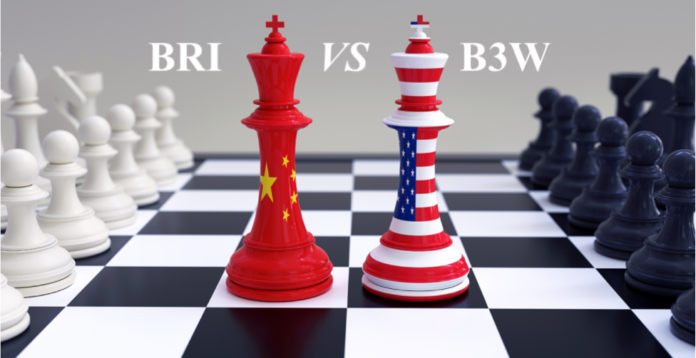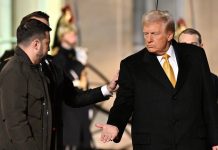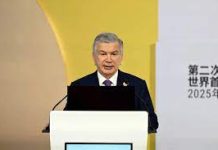By: Dr. Sahibzada Muhammad Usman
Belt and Road Initiative (BRI) vs. Build Back Better World (B3W) is the subject of a contentious dispute worldwide. Some individuals think that B3W is only a direct response to BRI. When considered in the context of the B3W factsheet, which claims that the G7 met to discuss strategic rivalry with China, this idea is further bolstered. B3W seems to respond to BRI, but the two programs have different advantages and disadvantages. Together, they can satisfy Pakistan’s infrastructure and development demands.
Build Back Better World (B3W), a worldwide initiative started by the Group of Seven (G7) in June 2021, aims to address the infrastructure needs of developing nations, which are estimated to be worth $40+ trillion, as well as the development gaps in low- and middle-income countries. The G7 nations and other invited democracies will mobilize market-driven private sector funds and invest via development finance organizations in areas including gender equality, digital technology, health security, and climate change. The United States, in particular, intends to improve private and public resource mobilization for sustainable infrastructure investment and integrate the requirements of multilateral development banks and international financial organizations. Additionally, the US will use the Transaction Advisory Fund, the US Trade and Development Agency, the Millennium Challenge Corporation, EXIM, USAID, and the Development Finance Corporation to open doors overseas.
B3W is the result of two earlier American government projects: The Blue Dot Initiative and the United States Innovation and Competition Act (USICA). By increasing the federal government’s role, allocating taxpayer funds to US technology, boosting trade, public investment, and lending abroad, particularly in Southeast Asia, Africa, Taiwan, the Caribbean, and Latin America, as well as limiting the flow of Chinese services and goods. Biden’s Blue Dot Initiative is an effort to counter China’s global influence and technology growth. The US collaborated with Australia and Japan in the Blue Dot Network to encourage high-quality private investment. Under B3W, more countries were invited, and India, South Korea, and South Africa are among those anticipated to accept. China reacted angrily to the USICA and Blue Dot, claiming that they were motivated by Cold War ideologies and an attempt to maintain US hegemony worldwide. China has responded to B3W by issuing a warning that just a handful of nations could no longer dominate the globe. China is anticipated to respond with various actions, including a trade war and legislative changes.
The BRI, on the other hand, is a global investment project that China started in 2013 to hasten the infrastructure building and economic integration of the nations along the historic Silk Road. The program is based on policy cooperation, frictionless trade, interpersonal interactions, and economic assimilation. State-owned funds, policy banks, and international finance organizations provide funding. Information technology, transportation, and energy are the three sectors with the “hard” infrastructure projects. Currency swap agreements, free trade agreements, and special economic zones, lower tariffs are examples of ongoing “soft” infrastructure initiatives. BRI will increase the global GDP by almost $7 trillion annually. One hundred forty nations have signed memorandums of intent with China to participate in BRI in 2021. Between 2013 and 2020, China made over $755 billion in BRI investments.
The 21st Century Maritime Silk Road and the Silk Road Economic Belt make up the BRI. Additionally, it adjusts dynamically and flexibly to meet various future cross-sectional and temporal demands. For instance, China started a public political and diplomatic operation in 2021 and dispersed medical supplies and aid globally while collaborating with foreign embassies and businesses working on BRI initiatives. Another case is the Digital Silk Road, which first aimed to improve users’ access to telecommunications networks, artificial intelligence (AI) capabilities, mobile payment systems, e-commerce, cloud computing, surveillance technologies, smart cities, and other high-tech sectors. This route largely serves the requirements of nations in Southeast Asia, Latin America, Africa, Eastern Europe, and the Middle East that need low-cost, high-quality technology to expand broadband internet and cell phone networks. BRI’s future investments will prioritize digital and healthcare due to the pandemic and the recent high revolution.
Since 2019, BRI has scaled back its lending and emphasized “high-quality investment” methods like risk mitigation techniques, project finance, and green finance. Resistance has become worse in certain places as project prices have climbed. Some are concerned that as China expands its economic influence abroad, so will its military influence since practically all new transportation infrastructure may be used for military purposes. Eight of the 23 BRI nations that were either moderately or very susceptible to debt distress were Tajikistan, Pakistan, Montenegro, Mongolia, Laos, Kyrgyzstan, and Djibouti.
In April 2015, the China-Pakistan Economic Corridor (CPEC), a bilateral infrastructure project, was unveiled. Pakistani Prime Minister Nawaz Sharif and Chinese President Xi Jinping signed fifty-one agreements and memorandums of understanding totaling $46 billion. The CPEC offers Pakistan the chance to solve its long-standing barriers to sustainable economic development as part of the more expansive Belt and Road Initiative. A couple of CPEC projects may have already been in operation. Most projects include infrastructural growth, special economic zones, and energy.
CPEC has had a significant impact on Pakistan’s electricity industry. Pakistan had a rising power shortage situation from 2009 to 2018, which had a detrimental effect on exports, GDP, employment, and local industry competitiveness. Chinese investment was the only opportunity to address the energy and economic problems swiftly. More than 70,000 direct employment have been generated for locals by CPEC, which has also developed several vocational facilities, announced scholarships, and added two percent to Pakistan’s GDP development. Through the provision of COVID-19 diagnostic kits and vaccinations, the Health Silk Road assisted Pakistan in containing the disease. Education, land development remediation, agriculture, minerals, industry, trade, water resources, and other vital fields are also cooperating via CPEC. Chinese actors encourage and engage with Pakistani players in the media, politics, small businesses, and education as CPEC advances to deflect criticism and foster goodwill. China set up the Joint Consultative Mechanism (JCM), which brings together political leaders from different Pakistani parties, the Chinese Communist Party, and government officials from both countries to forge consensus and win the support of numerous political parties.
B3W and BRI have unique benefits and drawbacks; some are unique, while others are comparable. Given its non-controversial heritage, BRI has better technical and infrastructural capabilities, a head start, and more leeway in case anything goes wrong. On the other side, BRI has come under fire in several nations, including Pakistan, for allegedly contributing to rising debt levels and disregarding local requirements. B3W, on the other hand, is in favor of labor protection and anti-corruption. However, it imposes constraints on financing, lacks technology, infrastructure, and probably has coordination issues.
The G7 has a track record of colonialism and broken promises; even the B3W plan lacks specifics and accountability. Additionally, the two have different foci. While BRI has included health and digital technology components, B3W emphasizes soft goals, including gender equality, digital technology, and health. Instead, it makes more investments in transportation and energy infrastructure.
However, there is a chance for coordinated efforts. Sustainability and regional peace are common goals of both programs. Regarding China’s multilateral cooperation principles, the expansion of B3W beyond paper, and the potential for two exchange learning programs, G7 nations with more favorable or neutral views toward China will help moderate the alleged competition between BRI and B3W. Most significantly, nations—including Pakistan—need both programs to close gaps in rights, sustainability, human development, and infrastructure. China, G7, and the rest of the world’s policies will determine how a partnership entirely committed to global prosperity functions.
About Author:
Dr. Sahibzada Muhammad Usman
Research Scholar and Academic; Ph.D. in Political Science at the University of Pisa, Italy. Dr. Usman has participated in various national and international conferences and published 30 research articles in international journals.
Email: s.usman@studenti.unipi.it






